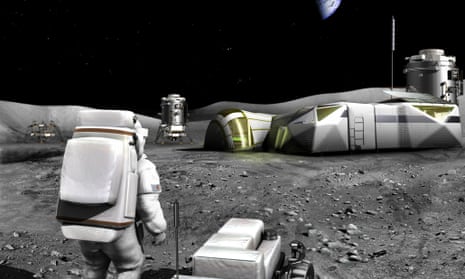The European Space Agency has outlined its vision for what lunar exploration could be in the future in a new video released onto the internet today. It comes in the wake of a decision to look into collaborating with the Russians over sending a lander to the Moon’s south pole.
The video is general and contains no reference to any specific future missions, but it is interesting because it seems to suggest that Esa would see a return to the moon’s surface as a precursor to going elsewhere.
Yet in Nasa there is a strong belief that Mars is the next surface destination. What is certain is that the two space agencies are going to have to pool their resources to achieve any human landings anywhere.
So, there is going to have to be some significant changes of position before any future agreements are made.
This article includes content hosted on esa.int. We ask for your permission before anything is loaded, as the provider may be using cookies and other technologies. To view this content, click 'Allow and continue'.
Although there are no specific missions mentioned in the video, the timing of this new video could be significant. Esa’s Directorate of Manned Space Flight recently received funding to resurrect the science goals of a lunar lander that would sample conditions on the moon’s south pole.
The moon’s south pole is one of the largest impact basins in the solar system. It would contain information about how the moon and the solar system formed. As yet, it is largely unexplored.
The Esa lunar lander was placed on hold in 2012 due to a lack of appetite from the science ministers of Esa’s member states. However, in December last year, Esa scientists and engineers presented a new plan to collaborate with the Russians on a similar mission. This did receive some cautious backing.
If the feasibility study works out, Esa would contribute to the south pole lander in 2019, and then to a sample-return mission in the 2020s. Time will tell.
Stuart Clark is the author of Is There Life on Mars? Find him on Twitter @DrStuClark

Comments (…)
Sign in or create your Guardian account to join the discussion